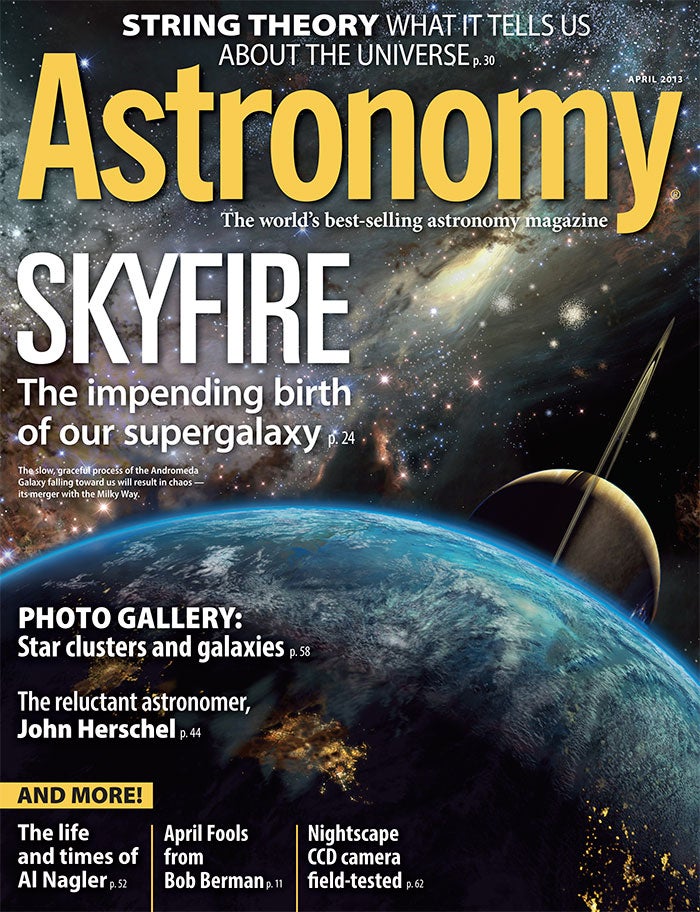
WAUKESHA, Wis. — Though it will not happen for another 4 billion years, the collision between the Milky Way and Andromeda galaxies will change both the night sky and future astronomers’ studies forever.
After blocking out background galaxies, stretching each other beyond recognition, and undergoing violent bouts of star formation, the two spiral galaxies will eventually combine into one giant elliptical that science writer Ray Villard calls the “Milky Splay.”
In “Skyfire: The impending birth of our supergalaxy,” Villard describes how the night sky will change in the distant future and how that will affect what scientists can learn about our universe. As he says, “As glacial as the galaxy collision will be, it will change radically what far-future astronomers — human and alien alike — will see in the sky.”
To learn about a galactic collision’s effects on future science, pick up the April issue of Astronomy, on newsstands March 5.
“What string theory tells us about the universe”
String theory — the idea that all particles are fundamentally made of strings vibrating in a 10-dimensional universe — could unify the physics of the large and the physics of the small into a coherent theory of everything. But do strings really rule the universe? And even if they do, can scientists find the evidence necessary to prove it? In “What string theory tells us about the universe,” astronomer Sten Odenwald provides a rundown on the theory, an explanation of the evidence, and some predictions for the future of the strange physics that could underlie our universe.
“The reluctant astronomer”
William Herschel, most famous for discovering Uranus, had a son who created two astronomical catalogs with thousands of objects each, though he is much less well-known than his father. His collection of 5,075 double stars and his 2,300-object list of nebulae and star clusters were invaluable to astronomers of his day and long after. In “The reluctant astronomer,” Andy Burns and Nick Howes profile a man whose influence on astronomy was significant and whose scientific contributions were not limited to a single field.
April sky events visible without optical aid
- April 14 — The Moon passes 2° south of Jupiter, 2 p.m. EDT.
- April 22 — The Lyrid meteor shower peaks.
- April 25 — Full Moon occurs at 3:57 p.m. EDT; partial lunar eclipse.
- April 28 — Saturn is at opposition.
Also in the April 2013 Astronomy
- “The life and times of Al Nagler” — Ever wondered what kind of experience it takes to have a successful, innovative telescope and optics company? Find out in this profile of Tele Vue Optics’ founder, Al Nagler.
- “Bernhard Hubl’s unusual universe” — Astrophotographer Bernhard Hubl focuses on making true-to-life images of off-the-beaten-path objects and showcases those priorities in this photo story.
- “Shoot easier with the Nightscape CCD camera” — Craig and Tammy Temple test Celestron’s quick-start, high-quality, low-price camera.
- “The Sky this Month” — Exclusive star charts will guide you through April’s night sky.
- The March issue of Astronomy also includes Astro News, Ask Astro, Snapshot, Breakthrough, Bob Berman’s Strange Universe, Stephen James O’Meara’s Secret Sky, Glenn Chaple’s Observing Basics, Tony Hallas’ Cosmic Imaging, Erika Rix’s Astro Sketching, Cosmic World, Letters, Web Talk, New Products, Reader Gallery, and Final Frontier.









